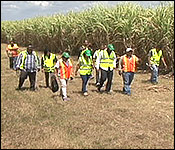
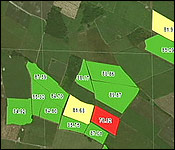
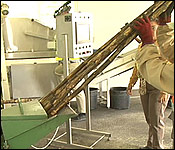 Earlier in the news, we told you how world sugar prices are currently down by as much as half of last year's prices.
Earlier in the news, we told you how world sugar prices are currently down by as much as half of last year's prices.
The world market is saturated with sugar, so the prices may dip lower as a result.
But, those within the local sugar industry are trying to adapt to the stiff competition by improving their farming techniques, and reducing production costs.
One such initiative is being led by BSI/ASR, and the Sugar Cane Production Committee, with funding from the American chocolate company, Hershey, through its Learn to Grow Program.
The initiative is simply to maximize the quality of the cane being delivered to the mill by ensuring that the crop is at its peak maturity and purity. It's called Sweet Sampling for Sweet Returns, and it's been running for just over 6 months. BSI invited the press to see how it is already yielding big results for the sugar cane farmers who've signed up. Daniel Ortiz reports:
Olivia Avilez - Cane Farmer Relations, BSI
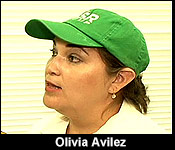 "This program really is to showcase and transfer some of the techniques and technologies that we are using in our farms to farmers, so that they are able to have the opportunity to develop their cane quality as well."
"This program really is to showcase and transfer some of the techniques and technologies that we are using in our farms to farmers, so that they are able to have the opportunity to develop their cane quality as well."
Daniel Ortiz reporting
For this demonstration on how this new sampling technique works, the Cane Farmer Relations Field Officers took the press to a cane field in an area outside of Orange Walk Town called "Ramonal".
Regel Cal - Cane Farmer Relations, BSI
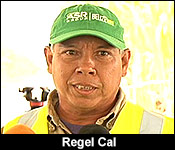 "This field belongs to Mr. Octavio Cowo. What we do, we approach the farmer, the reaping group leader and he indicates to us which fields he intends to harvest within 3 weeks. So we do testing like 6-7 fields at a time. So by that when he gets his results he can do a calendar of harvesting according to the results."
"This field belongs to Mr. Octavio Cowo. What we do, we approach the farmer, the reaping group leader and he indicates to us which fields he intends to harvest within 3 weeks. So we do testing like 6-7 fields at a time. So by that when he gets his results he can do a calendar of harvesting according to the results."
This cane sampling program is tied to another initiative between BSI and the Sugar Cane Production Committee. The extensive mapping of all the cane fields in the north under the Sugar Industry Management Information System, SIMIS, allows these field officers to be able to choose 5 to 10-acre plots on the cane fields to test. It is carefully monitored with GPS equipment.
Russel Navarro - Cane Farmer Relations, BSI
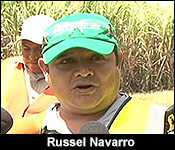 "We have a GPS where it shows the map of the cane farmers. So we have a system that has mapped almost all the cane parcels in the sugar industry and the parcels are given a unique number. So no number repeats itself. Once we have the parcel number, we enter the field at the mid-section. We guide ourselves with the GPS, because it shows our position and then we enter in and the person that do the cutting enters the field and take out the sample."
"We have a GPS where it shows the map of the cane farmers. So we have a system that has mapped almost all the cane parcels in the sugar industry and the parcels are given a unique number. So no number repeats itself. Once we have the parcel number, we enter the field at the mid-section. We guide ourselves with the GPS, because it shows our position and then we enter in and the person that do the cutting enters the field and take out the sample."
Once the cane samples have been carefully labelled, they are transported to BSI's spectra-cane laboratory for analysis.
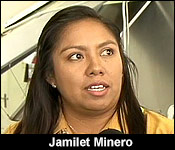 Jamilet Minero - Lab Tech, BSI
Jamilet Minero - Lab Tech, BSI
"Usually the branches that they brought in usually are like 10 stalks. We put it in the shredder and the machine which is the spectrecane is an IRI system - infra red light. This system will we do moisture, fiber, brick in cane - give you purity and based on this results we can passed it on to the farmers and help them have a very good harvesting schedule. To help them bring in as much sugarcane delivery to the factory. The machine is subdivided into 3 conveyors; the deliver conveyor, the presentation conveyor where the actual reading is done. Then we have the disposal conveyor. It is all controlled by one PLC and right there I input the data, the guy loads it, I press go and the machine does all the work. When it done, I run the quad which I can show you guys as well and I prepare the report."
Adrian Zetina - Research & Development Chief, BSI
"It gives us bricks which is the total dissolve solids. So this includes sugar which is the majority component of the bricks. It also includes salts, proteins and any other of these solids that we have in the juice. POL is the exclusively the sucrose that is in the juice. So using these 2 parameters you have POL and you divide by bricks and that will give us the purity. As a standard the industry has that we will accept 81% purity. The cane needs to be at 81%. If it falls below that then it cannot be accepted at the mill."
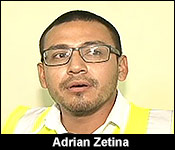 The tests sound highly technical, but the data is helpful to the cane farmers in making an effective harvesting plan.
The tests sound highly technical, but the data is helpful to the cane farmers in making an effective harvesting plan.
Once the results from the spectra-cane tests are in, it's the job of Vasni Pech, to make that data easily understandable and accessible to farmers.
And he makes it as simple as possible. The plots are identified on a map, and color coded to tell the reaping group leaders where to cut, and which plot of cane to leave alone. Green means that this plot is ready to harvest right now. Yellow tells the farmer to leave that part of the cane field for about 2 more weeks. Finally, red means that cutting this cane is a no-no. It's too young and needs more time to mature and ripen.
Vasni Pech - GIS Technician, BSI
"We use the graphic information system to develop that report and we correlate the laboratory information with the field data collected from the field officers. We have a field ID where we correlate with the laboratory and the field and we have 3 categories we use which are the if the field have a purity less than 81% is 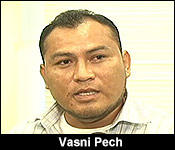 red, which means that it cannot be harvest at the moment. Also we have a category of 81-83% which is yellow, which means that that field can be harvested within 2 weeks and also the 3rd category is over 83% where that field can be harvested immediately if the farmer wants. A printed report is given to them with also the map color coded showing them that the results given from the laboratory."
red, which means that it cannot be harvest at the moment. Also we have a category of 81-83% which is yellow, which means that that field can be harvested within 2 weeks and also the 3rd category is over 83% where that field can be harvested immediately if the farmer wants. A printed report is given to them with also the map color coded showing them that the results given from the laboratory."
Adrian Zetina
"The information that we get, the farmers can know which fields have exactly what purity. So field A will have 85.6% purity, field B would have 88.9% purity. The farmer will want to go into the field that has a higher purity."
One farmer who we met today is convinced that this is a progressive step to help farmers get the most out of their investment.
Jose Luis Cowo - Cane Farmer, PSCPA
"Depending on the length of the month, regularly about 12 months, we thought it was at a good maturity. But now using the test we could determine much better accuracy."
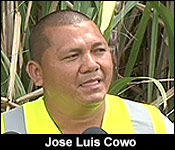 Reporter
Reporter
"Would you recommend this to other cane farmers? Would you recommend them to become a part of this program?"
Jose Luis Cowo
"Definitely, because we need to understand that all the cane farmers work hard and we need to get better on business of cane."
Adrian Zetina
"We've seen some very good quality of cane that has been coming in. Farmers tend to peak around March/April of this time. So all the cane that they are bringing in right now is about 89, 90, 91% purity with very low moisture. So all the cane out there is ready to go."
To also ease the pain of these current low world prices for raw sugar, BSI/ASR is looking into increasing the production of direct consumption sugars. These value added products sell on the market for about 42% more than raw sugar.
ASR/BSI has to make a 22 million-dollar investment to make the increase in production of direct consumption sugars a reality. The company is hoping to make part of that investment this year.



